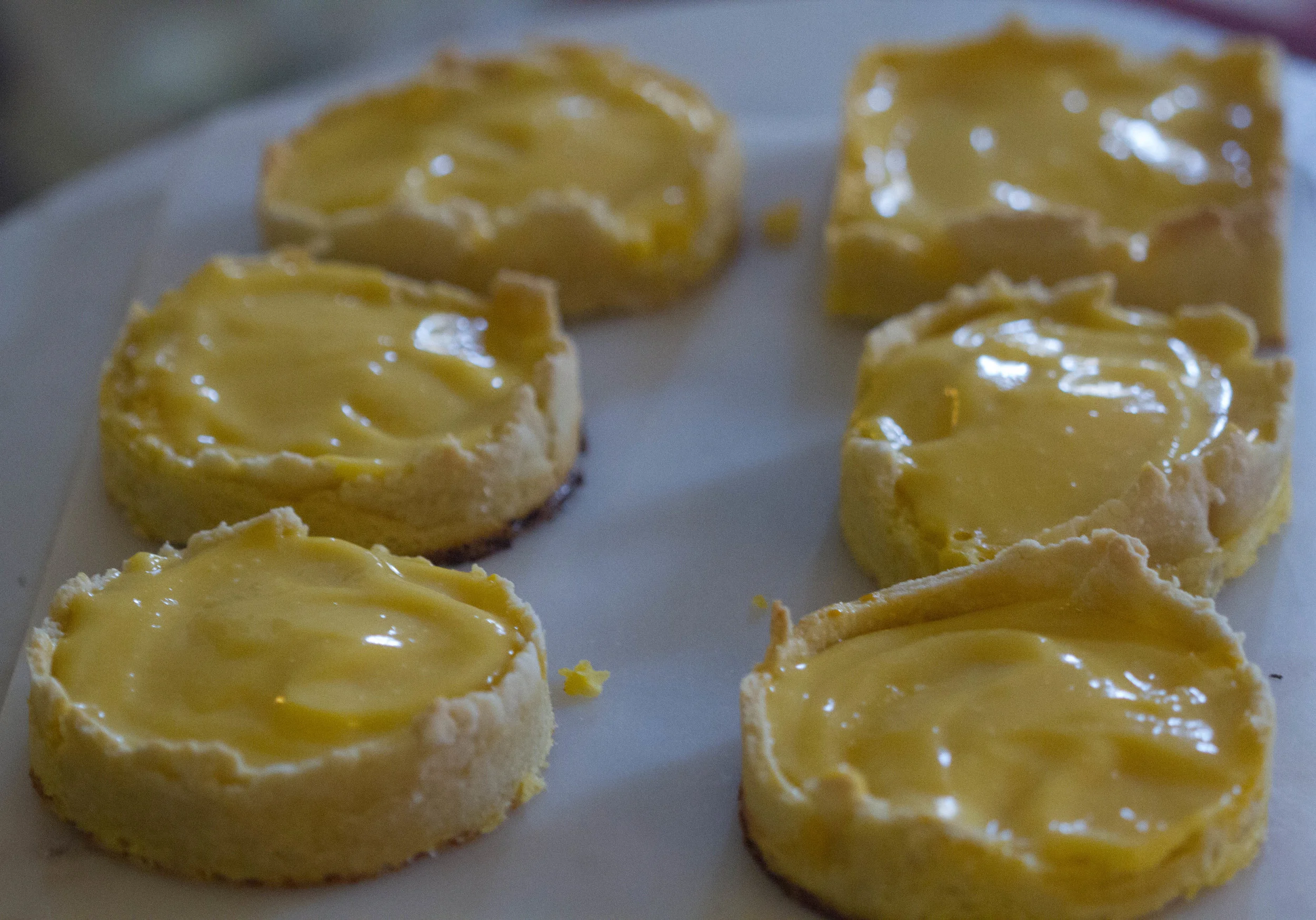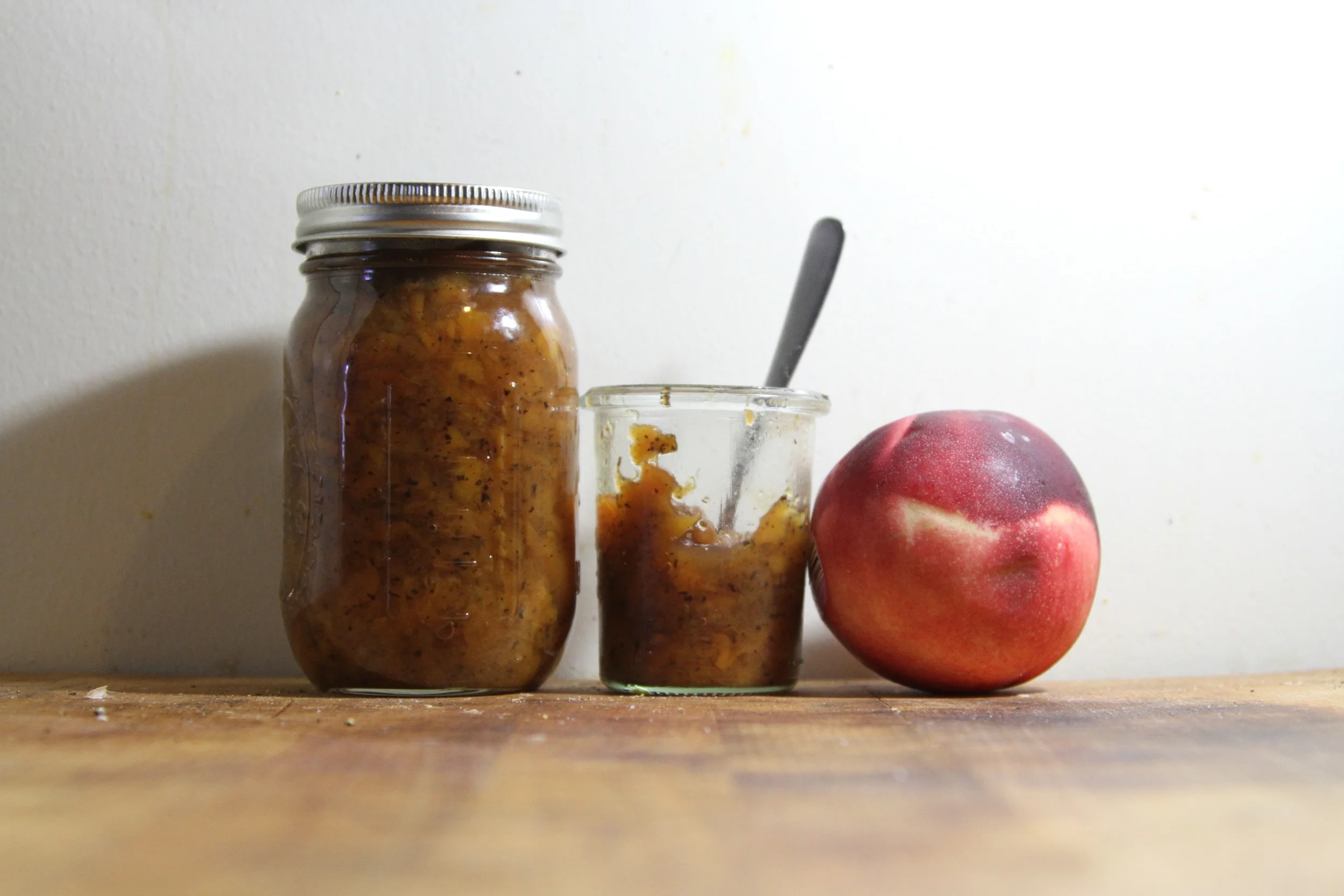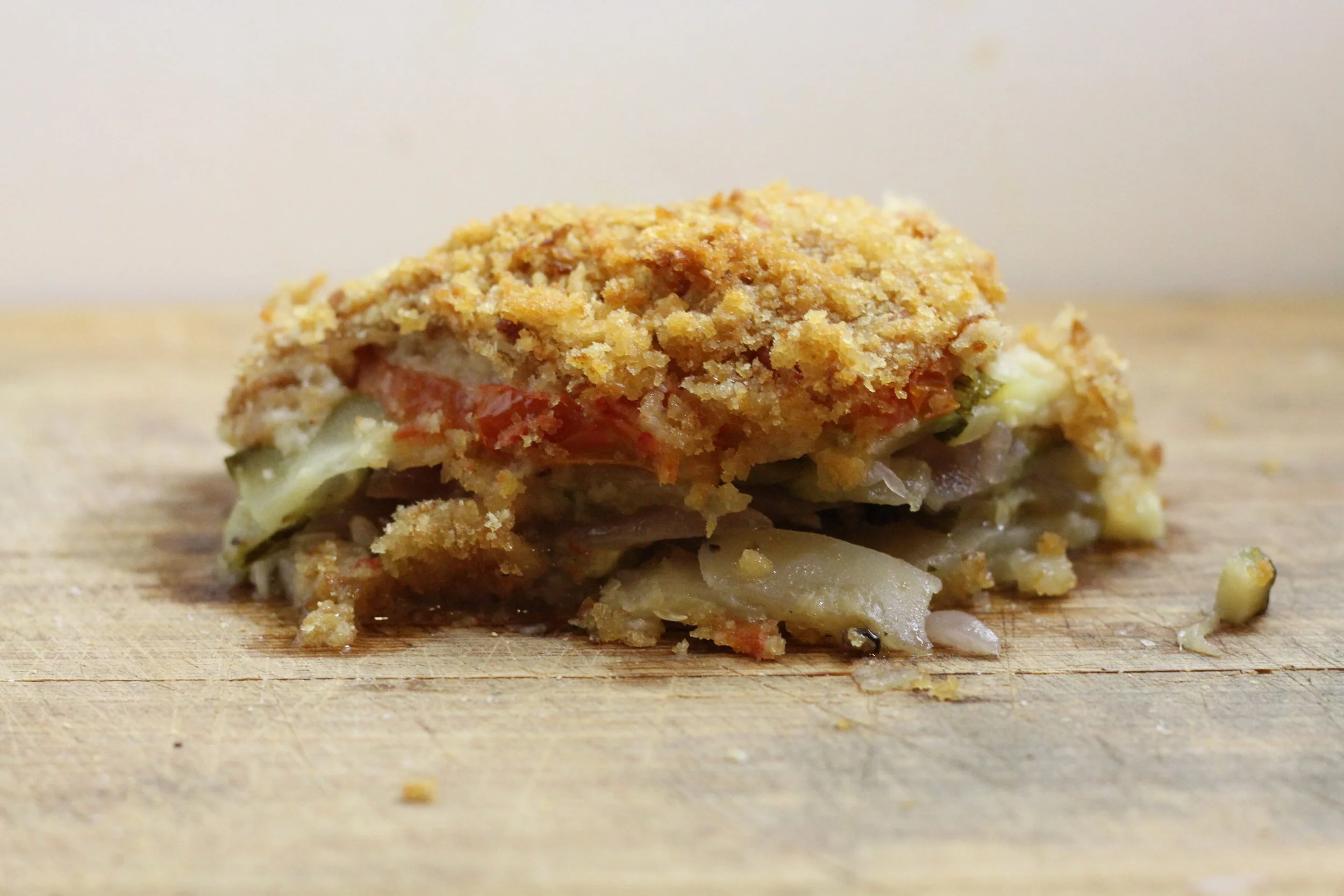Breakfast Lunch Tea by Rose Carrarini
I bought this book somewhere around 2009, in the middle of several years that I don’t remember much about. I do remember going to my first real long-lasting day job, very unsure about what I was doing or if I wanted to do it. I remember not liking my roommates very much, not liking that my “real friends” all seemed unwilling to come visit the crappy part of Brooklyn I was living in (it’s really fancy now!) and not liking many things at all. I was depressed and broke, and a kind mentor gave me an Amazon gift card for Christmas, and I bought this book whose cover I’d been staring at for months. I wasn’t cooking or eating much at the time, certainly not baking; my flour was always getting bugs in it. I was reading food blogs mostly for the fantasy; other people's lives always seemed much more together than mine.
chicken & asparagus salad
But I was drawn to this book and its lack of Ina-style cover photos, the total impracticality of a French baking book, its hints that the recipes within were about fun and pleasure, not need. I read it, even less convinced that I would ever make something from it but willing to try. When you’re extremely depressed, being willing to try seems like the first sign of a future. I threw a brunch party and made the gingered melon salad, and I wasn’t sure if I did it right or not, but the party ended with everyone blacked out at 4am and my intern from work sleeping with my roommate, so a success of sorts. The book went on my “shelf” – a windowsill, then the floor – but I bought more of them, a real bookshelf, a collection. The fantasy was worth the price.
I started cooking a lot more, and reading a lot more, and it eventually led me back to this book, this summer. This article reminded me of this period of my life, of what we cook and make when we can’t or don’t want to get our shit together. Is this book actually good? Does it hold up? I think so, but honestly it’s hard to tell. Cookbooks – books in general – are as much about your experience with them as about the text itself.
lemon cake with cranberries
But at this point I’ve made more, and more complicated, recipes from this book than I thought I’d be able to. I made the lemon tarts, and the quiches, and the chicken-asparagus salad, and a lemon and cranberry loaf cake. The pizzette are unquestionably the stars – the dough comes together beautifully, it freezes, it bakes up easier than any other quasi-pizza I’ve made. It reminds me so beautifully of going to the kind of bakery in Paris where they have food inspired by recipes from all over the Continent but Frenchier. British and Italian food reinterpreted for a French audience can be fun because you get the commitment to detail and quality, without some of the hang-ups of tradition for traditions’ sake. You can put basically any topping on these pizette without your nonna disowning you because they're French pizzas by way of a British chef, who can really complain?
But the food coming from the French tradition is spot on - full of fresh produce and herbs, big hearty salads, and delicate fruity pastries. There aren't a lot of surprises, but the attention to detail and variety and execution - without overthinking or over complicating - are all there. I really liked the photography as well - a good sense of place and details, but moodier than American cookbook photography is generally allowed to be.
lemon tarts
I also solved one of the great questions I had when I re-read the book – how does she get those perfect square tart edges on mini-tarts? I scoured the internet for mini-tart pans with perfect edges, found nothing, wandered aimlessly around Sur La Table for an hour, and you guys, I figured it out…she bakes them in cookie cutters. The $1 bulk metal kind. There are some other good ideas in here, among some very solid classic recipes. Glazing your lemon tarts with curd (which you can make a day ahead) does let you engineer your filling without a thought to cracking, as promised. Soaking your fruit salad in ginger syrup is a genius way to resuscitate crappy bodega fruit instead of tossing it.
If a cookbook is worth some good ideas and a solid pizza dough recipe, then this book fits the bill. If it slowly, patiently encourages you to get your life back together and then gives you those rewards at a later date in a very long journey, well, that’s a pretty good bonus.
quiches
make this one thing:
Melon and Ginger Salad
100g (1/2 cup) caster sugar
4cm (1 1/2 inch) piece of fresh ginger, finely sliced
juice of 1 lemon, plus extra to taste
1 orange-fleshed melon, peeled and deseeded
1 green-fleshed melon, peeled and deseeded
a large wedge of watermelon
Put the sugar in a saucepan with 250ml (1 cup) water and bring to the boil over a gentle heat, stirring constantly until the sugar dissolves.
Add the ginger and leave to cool while the ginger infuses.
Strain the syrup and add the lemon juice.
Cut the melons into chunky pieces and put them in a bowl.
Pour over the syrup and mix well. If the salad tastes too sweet add more lemon juice,.
Chill for about 30 minutes.










